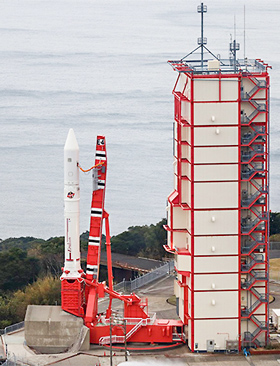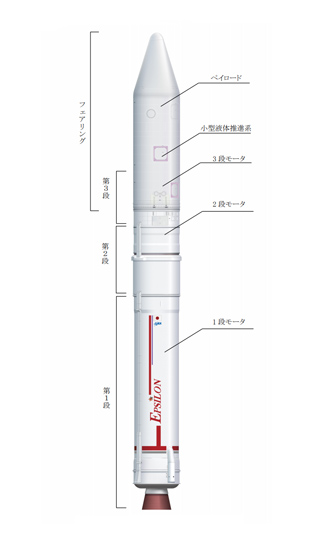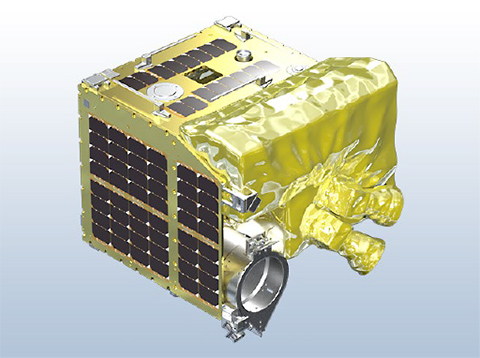News
Japan's Small Rocket Epsilon-4 Successfully Launched with 7 Satellites Onboard including the Shooting-Star-Satellite ALE-1 Updated in March 2019
On January 18, the Japan Aerospace Exploration Agency (JAXA) released the small rocket Epsilon-4 at 9:50 a.m. from Uchinoura Space Center Observatory located in Kagoshima Prefecture. Epsilon-4 carried 7 small satellites created by space ventures and other teams.
One of them was the “shooting-star-satellite” ALE-1, created by a space venture. ALE-1 is a unique satellite made specifically to release special metal particles into space to artificially mimic a shooting star. Other satellites include JAXA's own small demo-satellite RAPIS-1 (Rapid Innovative Payload Demonstration Satellite 1) and satellites made by different university teams: Keio University (MicroDragon), Tohoku University (RISESAT), Tokyo Institute of Technology (OrigamiSat-1), Kyushu Institute of Technology (Aoba Velox-IV) and Nihon University (NEXUS). JAXA's RAPIS-1 will conduct experiments on space equipment selected through public tender.
Epsilon is a three-stage compact solid fuel rocket developed independently by Japan. It features a highly reliable yet simple structure and low cost. Epsilon-1 was launched in September 2013, Epsilon-2 in December 2016, and Epsilon-3 in January 2018. Epsilon-2 was an improved version of Epsilon-1. The second-stage rocket was enlarged to total 26 meters. That is still half the size of Japan's major rocket H2A, but it was able to carry heavy satellites totaling 600 kilograms or so. Epsilon-3 did not differ from 2 in its basic design but the device to separate the satellite improved.
This launch on January 18 was the first since Japan's Space Activity Act was executed in November 2018, encouraging private enterprises to take part in space development. By accomplishing good launch records and by differentiating and maximizing benefits of large rockets like H2A/H2B in addition to small rockets like Epsilon, JAXA is determined to enter the world's space business market. H2A for instance can launch large satellites while H2B can carry unmanned cargo transfer vehicles like Konotori (HTV) to supply the international space station (ISS). Epsilon on the other hand has the capacity to efficiently and economically launch multiple satellites totaling 500-600 kilograms.










